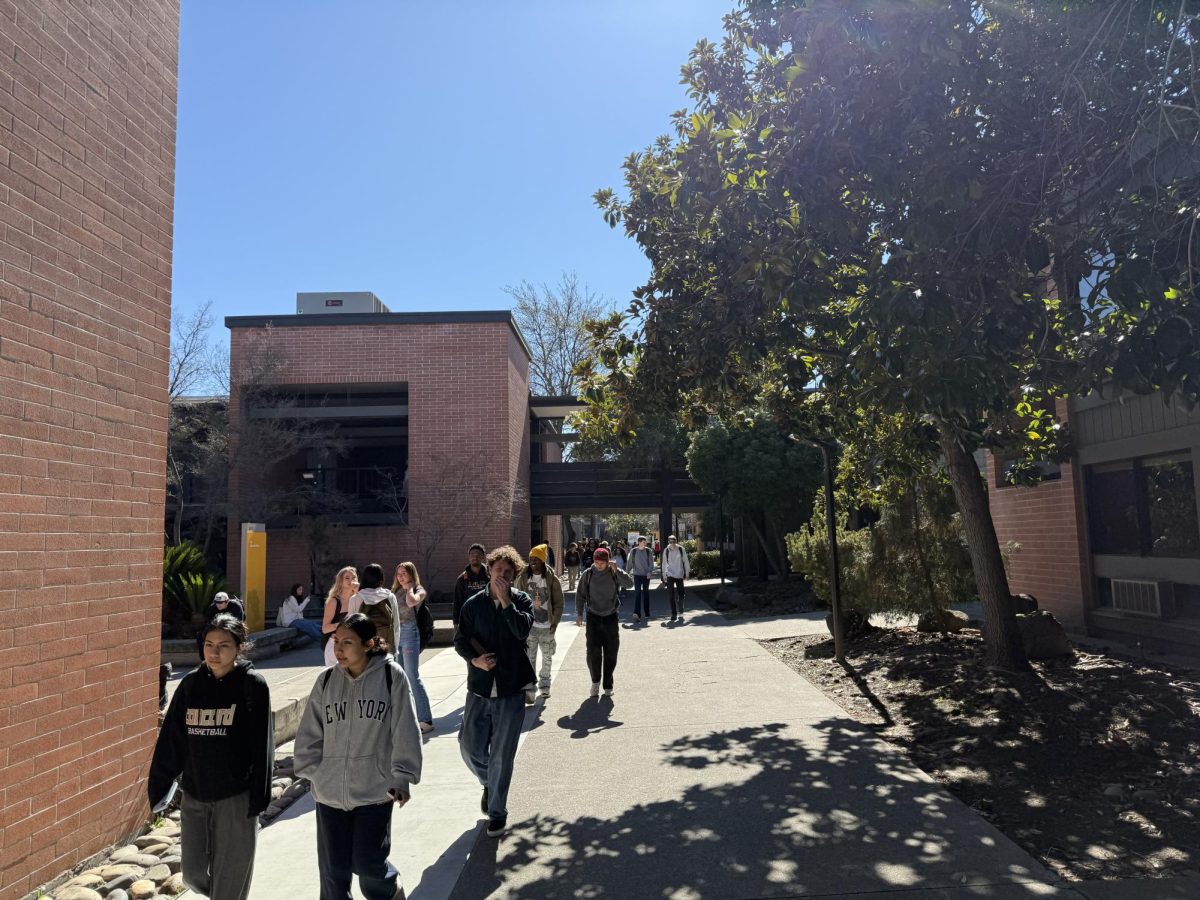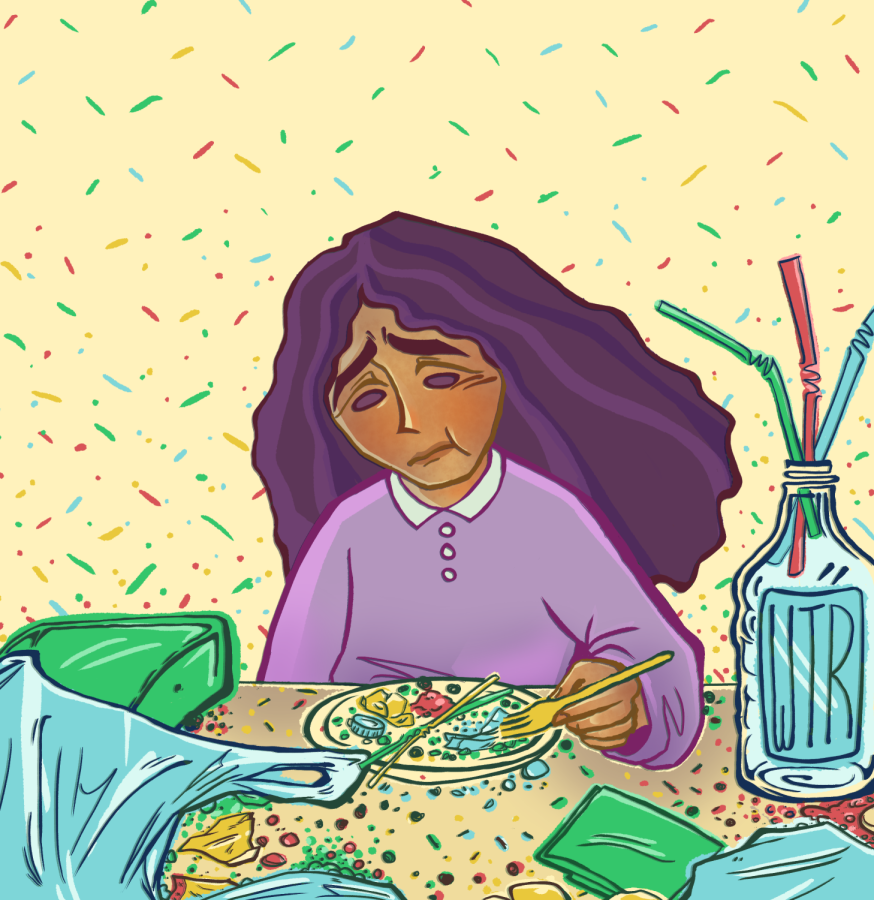Humans Wrapped in Plastic: Scientists Reveal Exposure is Linked to Health Problems
Chase McGunn used to pack her lunch with plastic sandwich bags and plastic utensils. That was until she became aware of the presence of harmful plastics in her coffee.
“One day I saw something floating on top of my coffee and I knew it was something I should not be ingesting,” said McGunn, a psychology major at Diablo Valley College. In response, “I became curious and researched heat exposure to plastic and realized they were microplastics.”
After her discovery, McGunn said it was easy to make a small lifestyle switch to benefit her health. “Now I’ve stopped using plastic altogether and I stick to glass” for packing food, she said.
Her decision reflects the public’s growing uneasiness about plastic, a substance that’s present in almost every aspect of modern life—from hospital tubes to the packaging and storage containers that hold our produce items on grocery shelves across the nation. While the convenience of using plastic is obvious, the side effects may be less so.
Plastics, while recyclable, are not biodegradable. This results, over time, in the plastic becoming smaller and smaller until it turns into microplastics: tiny particles less than 5 millimeters in diameter that travel through the air into our lungs and bodies.
Researchers have long been studying the risks to human health caused by microplastics, and in an Oct. 27 webinar hosted by the Washington, DC-based Plastic Pollution Coalition, experts shared new details about their research into the dangerous effects of microplastics in the human environment—not to mention their contamination of most areas of the planet.
Dr. Deonie Allen, a Marie Curie Global Research Fellow, expressed great concern for humanity, stating that signs of the toxic particles are now ubiquitous on Earth.
“Microplastics are in the Arctic, at the top of Mt. Everest and at the bottom of the Mariana Trench,” said Allen.
“The toxic chemicals from plastic are going through our hair, mucus membranes and into individual cells of our body. Microplastics found in our bodies are an eighth of the size of a red blood cell so it can pass through a cell wall quite easily.”
The long-term effect of plastics is still being explored, but the prognosis isn’t good. Once plastics break down, the toxic chemicals they contain have no stopping point and can travel endlessly through air and water.
“Microplastics from the Sahara desert could be in the air you breathe when you walk out the door in California,” said National Geographic explorer Asher Jay, speaking on the webinar call.
The cause of the long-distance travel of microplastics can be traced back to what scientists call the plastisphere, an entire marine ecosystem that lives on microplastics scattered across the Earth’s oceans. Within the enormous, continent-sized plastisphere, the microplastics act like velcro, attaching themselves to living organisms and then traveling with them around the world, shedding into even tinier particles as they go.
Many are now asking the question: How wrapped up in plastic have humans become, and at what point, if any, can we leave our plastic lifestyle behind in favor of something healthier and more sustainable?
In fact, scientists have already proposed many solutions that can diminish plastic and microplastic exposure.
Dr. Steve Allen from the Oceanic Research Institute, for example, says that “opening the windows while vacuuming can prevent the plastic particles pulled up from the carpet by the vacuum to cycle in the air of the home and into the lungs.”
“They won’t disappear,” said Allen, “but instead will go into the environment.”
Matt Simon, scientist and author of A Poison Like No Other: How Microplastics Corrupted Our Planet and Our Bodies, shared some other helpful tips during last month’s call.
“Wearing cotton clothing instead of nylon, spandex and polyester is life-changing in terms of exposure,” Simon said. Also, “Placing a filter for plastic in the washing machine and using only glass products helps a lot.”
At the end of the day, Simon said, “the use of plastics in society poses a major risk, and while there is no single solution, society can work towards cleaning up the mess now through teamwork and activism.”
Data recorded by the U.S. Environmental Protection Agency shows that in 1960, America generated 390 tons of plastic. Nearly 60 years later, in 2018, that number had climbed to 35,680 tons.
The mass production and consumption of plastic has seemingly surpassed the threshold for humans to safely survive on the planet. Scientists say they are now preparing for a plastic exposure epidemic affecting humanity and the environment on a scale previously unseen.
In the near term, without greater changes on an industrial scale, actions like those taken by McGunn and others like her may be the only way, if any, to prevent it. So next time you are on campus, maybe you’ll consider trading the plastic for a paper bag or glass.
(Illustration by Ericka Carranza)









































































